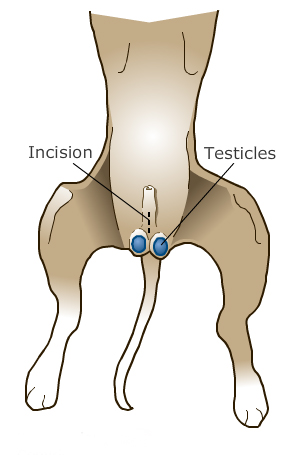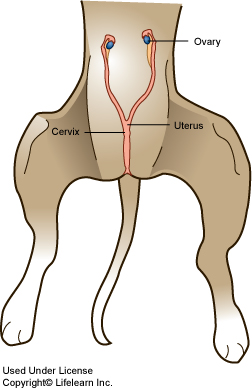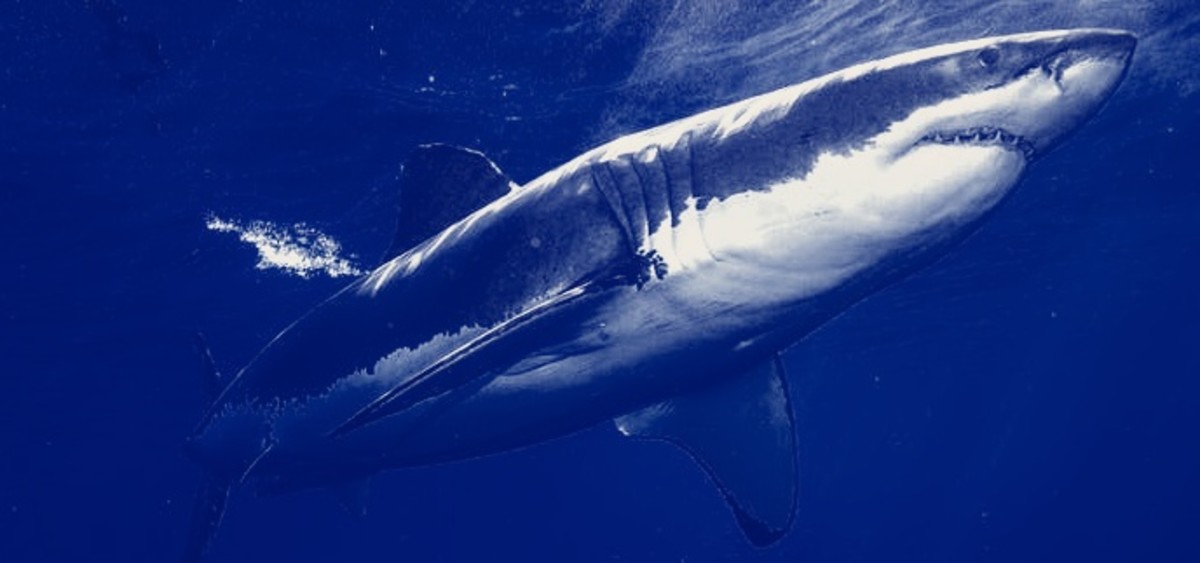Behind The Scrubs: On Spaying and Neutering
So You Have a New Pet...
A big question that a lot of new owners face is whether or not to get their new little bundle of fluff and cuteness spayed or neutered. A number of owners don't like thinking about it, because when their puppy or kitten is old enough to actually think about doing such a thing, their wee one is still so small and fragile-looking that they think of it as cruel and unnecessary in terms of pain and medical cost. But there's a whole lot beyond the idea of "it'll prevent unwanted litters". Yes, that's a huge benefit, but what else is there?
Say you have a new kitten. You plan on keeping this kitten indoors, away from all other cats, under lock and key, never to see the outside world and be exposed to the myriad dangers that await them beyond the threshold. There's no way your little one will ever have the chance to go out and either come home pregnant or make more kittens elsewhere. That's easy enough, right? No unwanted litters. But your veterinary staff will still advocate "fixing" your new family member, even if you're sure they're not broken. Here's why.
Dog Neuter Site

Males: Why Castration is Beneficial
Castration is one of the biggest sources of contention in this whole subject, and the current hypothesis centers around our society's view on masculinity. We have no proof of this, nor is there any way for us to really test it, but currently it seems that male dogs and cats are the most often left intact - dogs most especially, and most often by young male owners. This is particularly ironic, considering that castration is even less invasive and much easier of a surgery than spaying on any species. So let's jump right into the controversy and hit this meaty part of the debate head-on.
When it comes to cats, the procedure goes something like this: after everything is clipped and scrubbed, two small incisions are made on either side of the scrotum where the testicles are gently extracted and the vesicles tied off. That's it. Depending on the age of the kitten (and therefore the size of the testes), there may not even be any sutures, as the incisions are so small they'd heal better without them.
In dogs, the procedure isn't a whole lot different. Clipped and scrubbed, a single incision is run down the central line of the dog's abdomen, right below the penis. The testicles are gently moved upward and - one at a time - removed through that incision. The vesicles are tied off, a few stitches put in place, and done. Depending on the age of the dog at the time of the procedure, the veterinarian may wrap the scrotum in vet wrap or medical tape to prevent blood from pooling in the now-empty scrotum. This is usually only an issue for more mature dogs who have left, erm, more room behind now that the testicles are gone.
So now that you know what's entailed, why do it at all? And what are the risks?
There's several benefits. Top among them that pretty much everyone knows is a stop on any potential litters from that animal. But what you might not know is that it drastically reduces their chances of future medical problems. Among them are testicular cancer (can't have cancer in something that isn't there) and penile cancer. Intact males also have a tendency towards having enlarged prostates, which can create urination issues and discomfort. One of the things my doctors always have to check on a full workup exam is whether or not an intact male's prostate has become enlarged. Sometimes it's pretty drastic, usually when the dog is getting towards the beginning of its geriatric age. So if you don't want bladder issues or incontinence problems, neutering will help guard against that. Males - particularly male cats - are very prone to urinary tract infections as it is, and due to the much longer urethra, it can be a real pain to get bladder and kidney stones out completely if it comes to that.
(I have, unfortunately, been a tech on a surgery of a young dog with rather drastic stones in his bladder. The largest of which was larger than a chickpea, and the rest were unfortunately more like sand. It took more than two hours to complete the surgery, and the doctor was still not completely convinced that all the stones had been evacuated.)
Speaking of urinary problems, everyone knows male dogs like to pee on things. An intact dog will do this even more so, to the point of marking inside the house, on people (saw it happen in my clinic, point in fact... that poor tech), and several other inappropriate places. Male dogs feel the urge to mark their territory due to testosterone, and neutering them early will prevent this kind of behavior from fully developing. If the dog is not castrated before roughly 8 months of age, the possibility of him exhibiting marking behavior is higher, so if you'd rather not have your dog peeing on everything in sight, it's best to have them neutered around 6 months.
Male cats aren't much better in that department. Male cats will also urinate to mark their territory, and more frustratingly their urine is rather, ahem - "odoriferous" is a kind way of putting it. Intact male cats don't just lift their leg to urinate on things: they'll walk up to something - be it a wall or a couch or a tree - lift their tail, and spray urine backwards to coat the object of their interest with a very intense scent. (I once had a cat who was castrated later in his kittenhood who unfortunately began spraying, and his favorite target was the heater grates inside the house. You can imagine how lovely that smelled.) Much like dogs, neutering cats early will lessen their propensity to ever exhibit this behavior.
Another benefit is a drastic drop in both aggression and roaming behavior. Dogs and cats alike will stop at nothing to attend a female in heat, and they will destroy doors, leap fences, and fight others of their kind in order to succeed in mating. The damage of dog fights is not to be underestimated; cat fights even less so. Injuries including punctured lungs, broken bones, loss of eyes and lopped off ears, destroyed digits, ruined tails, abscesses wounds and even death can result from such scuffles. And it doesn't have to be simply over a female, as both male cats and dogs left intact tend towards territorialism. Even the perceived threat of another male can be enough incentive to fight. Castration will reduce their testosterone and thereby prevent this kind of behavior from being so intense, if being exhibited at all.
Lastly, intact male dogs can engage in some rather embarrassing mounting behaviors. This isn't exclusive to other dogs; male dogs with high testosterone levels will, if left without mating opportunities, occasionally mount stuffed animals, pillows, clothes, beds, legs of people, and even other animals (which often confuses the rabbits and cats I've seen be the targets of such behavior). While some humans may find this hilarious, it's only funny until it happens on your bed or pillow, or your favorite work shirt or shoes. If castrated early, male dogs will be much less likely to exhibit this behavior at all.
How Will Neutering Change My Dog?
- How Will Neutering Change My Dog? | ASPCA
Neutering has health benefits for your dog, and you already know it goes a long way toward reducing pet overpopulation, but did you know it can improve some of your dog's unwanted behaviors? Find out why.
What's the Flip-Side of Castration?
There's no guarantees in life, and included in that is that it's not for certain that a dog or cat will ever exhibit these unwanted behaviors after being neutered. A castrated dog may still end up being aggressive, and a castrated cat may still spray. These are possibilities. There is also the chance that a dog undergoing any surgery may contract an infection if the veterinary office is less than appropriately sterile. This, however, is exceedingly unlikely and uncommon.
Other issues may include difference in growth rate (intact males may be slightly shorter than their castrated counterparts), a very slight increased risk to develop osteosarcoma, hemangiosarcoma, hip dysplasia, cranial cruciate ligament rupture (particularly in dog breeds in breeds that carry the risk of these ailments already), hypothyroidism, and weight gain. It is important to note, however, that these risks are much smaller than the risks associated with intact male physiology. Many of these maladies are specific to the breeds (cats, for example, are no more likely to develop hip dysplasia, and an intact male German Shepherd may very well develop hip dysplasia anyway), and weight gain as a side effect can be easily controlled by diet and exercise.
Dog Spay

Do You Spay Or Neuter Your Pets?
If you have pets, are they spayed or neutered?
Females: Why Spaying is Beneficial
If you haven't heard a female cat in heat, it's not likely something you'll ever forget. For a week or so, a female cat in heat will do everything from purr, trill, meow, howl, to scream. She will find your legs to be quite flirtatious and may present her rear to you at rather awkward times. And if she goes through this entire period without becoming pregnant, she may very well enter another heat cycle in another month.
For females, more people see the obvious benefits for spaying in both cats and dogs. Males don't have the added burden of suddenly turning up pregnant; females obviously do, and most people are (thankfully) kind-hearted enough to try to find homes for the new litter if not hand them off to a shelter. But a simpler benefit also includes not having to weather a heat cycle. Even if your pet doesn't manage to dart out the door in search of a mate, an intact female will often put you through a rather trying period of wandering, loud vocalizations, strange behaviors, and bleeding.
By spaying a female cat or dog, you've eliminated the possibility of ending up saddled with an unwanted litter (and contributing to the current homeless pet population), and the estrus cycle that can drive you absolutely to tears for want of sleep at 2AM when your little one won't stop calling for every male in a two-mile radius. But what other benefits are there? Turns out there's quite a few, mostly medical.
A spayed female of either species is a lot less likely to develop several different kinds of cancers: mammary, ovarian, and uterine being the most common and most obvious. Again - you can't get cancer in an organ you don't have. But beyond that there are several maladies besides cancer that can take place in the entire reproductive system. Mastitis, or infection of the breast, is one of them. Ovarian tumors aren't unheard of. But the one I've seen personally (and happens more often than any tech or vet would like) is something called pyometra, an infection of the uterus that quite literally fills the entire organ with pus.
My first pyometra patient was no more than 5.5 pounds. When her uterus was removed (since there's no way to really cure it when it gets to a certain point, beyond removing the entire offending organ), she weighed 2.5 pounds. So filled with pus was her uterus that it was nearly half her weight. And, if you'll pardon the graphic imagery, it looked rather strikingly like a sausage, taut with infection.
Cancers are often fatal, but so too can pyometra be, and it's very easy for an intact female to acquire it. It starts as a simple bacterial infection, and can go unnoticed until it's in very dramatic stages. If caught early, it can be treated with antibiotics, but it's very difficult to diagnose early enough. After it gets past that point, the only real option is spaying the animal anyway, which would have saved you and your pet a lot of stress to begin with.
Other issues that both female dogs and cats may experience due to being left intact include similar problems as their male counterparts: roaming, urinating inappropriately (females left intact want to attract male attention just as much as the reverse), and even aggression. After all, heat cycles are hormonal roller coasters not unlike what humans endure, and it goes without saying that PMS is frequently regarded as a dangerous and unpredictable time for a woman. To make matters worse, dogs in particular will occasionally go through what's known as a "false" pregnancy or pseudopregnancy, wherein they will "adopt" objects and treat them as their litter. They can become very protective of their "offspring", leading to conflict-aggression and potential injury,
Should your pet become pregnant, there are medical risks associated with carrying and delivering a litter as well. Especially true of English Bulldogs, which very frequently cannot deliver without the aid of Caesarian-section, you may find that a female dog who has a litter fathered by a much larger breed may have incredible - if not impossible - difficulty with delivery. Puppies in particular are difficult to raise en masse if you are inexperienced or poorly equipped, though kittens are just as apt to destroy your furniture as they play.
MYTHBUSTER: Allowing your female cat OR dog to go through a heat cycle or a litter before spaying has NO discernable medical or behavioral benefit whatsoever. I don't know how this myth got started, but it's unfortunately commonplace. The idea that your pet having a litter will "calm them down" is completely false, and allowing your pet to experience a heat cycle prior to being spayed actually increases their likelihood of developing mammary and uterine cancers.
How Will Spaying Change My Dog?
- How Will Spaying Change My Dog? | ASPCA
Spaying has tons of medical benefits for your dog, but it can also affect her behavior. Having your dog spayed won’t affect her working abilities, friendliness, playfulness or personality, but it can change the many unwanted behaviors associated with
How To Tell If You Cat Is In Heat
What's the Flip-Side of Spaying?
Similar to their male counterparts, female dogs and cats who are spayed may grow slightly taller than their non-spayed cousins, and dogs predisposed to particular maladies (such as transitional cell carcinoma of the bladder, osteosarcoma, hemangiosarcoma, hip dysplasia and cranial cruciate ligament rupture) may have a very slight elevated risk of contracting these issues. Hyperthyroidism and weight gain are also possibilities, much like in males, though uncommon and easy to manage with diet and exercise.
In females, however, there are a few new risks. Due to the removal of the ovaries and uterus - two major manufacturers of oxytocin estrogen - a female dog who was previously aggressive towards her family may become even more so. Though this is uncommon, should this occur, it may be manageable with hormonal therapy and/or behavior therapy. Spayed females also have a tendency to develop urinary issues, including more frequent urinary tract infections and what is known as "spay incontinence".
Spay incontinence occurs when the lack of estrogen is enough to diminish proper sphincter control. This seems to occur more frequently in dogs spayed before three months of age and in dogs who are overweight, and is compounded by dog breeds predisposed to incontinence issues. However, medical treatment exists to limit this problem and it can be managed with a veterinarian's guidance.

Is That All?
Despite how incredibly long I've gone on about this subject, and how bored you may find yourself reading all of this, there's actually even more to it. I've tried my best to break it down hard and fast while including the biggest and most important parts. The breakdown comes down firmly on the side of "yes", spaying and neutering is beneficial", But there are considerations and exceptions as always. If you rescue a very old dog, or have a cat with a congenital heart condition, there might be reasons to avoid the anaesthesia. But that's in the very rare exception category, and as always, consult your vet before undergoing any treatment with a pet. If your vet finds a reason to be cautious, there's a reason for it. If your vet finds no risk factors, that doesn't mean you can't ask questions. Vets would far rather answer your questions and have you be a well-informed pet owner than just hurry you along.
And I know I didn't touch on cost. I'm hoping to do a page soon on costs and benefits, so I'll cover more on that another time. Otherwise... if you have questions, don't hesitate to leave a comment! If I don't know the answer, it's because it's beyond my education, and you'll probably be better served asking a veterinarian, but I'll definitely say so.



